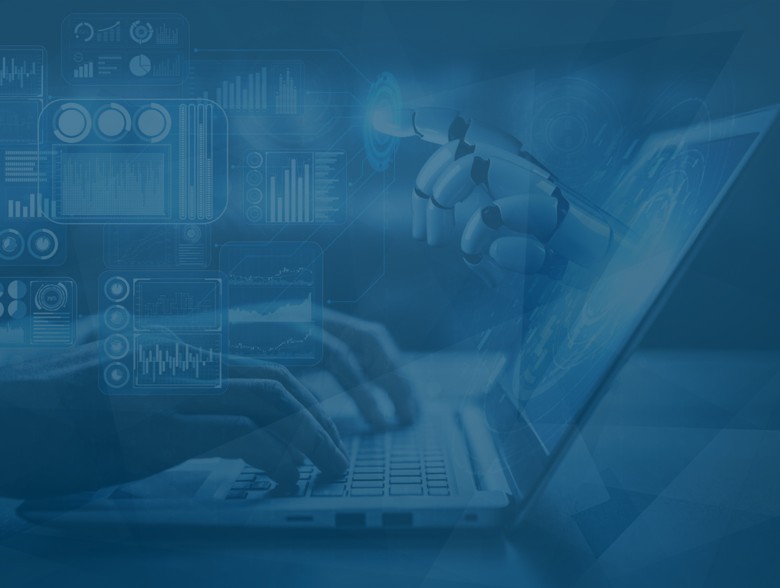Why embracing AI solutions is key to combatting evolving cyber threats across many sectors.
By Ralph Chammah, CEO, OwlGaze
With cyber threats becoming increasingly diverse in how they strategically cripple organisations, the cybersecurity landscape is under increasing pressure to bolster its technology and defence methods. Cyber-attacks have only become more frequent year-on-year, with the costs to an unprepared business only increasing with them. Data breaches can harm not only your organisation’s wallet but also your reputation. It is therefore imperative that businesses branch out when it comes to data protection, and AI could indeed be the answer cyber operatives need to detect and prevent threats before they can do any damage.
No industry is safe
Cyber-attacks are not limited to one sector. As we have witnessed throughout this year, no industry is safe. In the healthcare industry alone, doctors continue to struggle to cope with the fallout of a major ransomware attack on NHS software supplier, Advanced, which took place in early August. Cyber actors target hospitals and healthcare providers increasingly to access sensitive patient data, leading to critical consequences for patients, the NHS and other national health systems globally. Ransomware attacks can be particularly deadly – France suffered an attack on the Centre Hospitalier Sud Francilien (CHSF) late last month which totalled over £90 million in damages. Cyber actors have no remorse; therefore, it is crucial that organisations keep their cybersecurity up to date, especially when lives could potentially be on the line.
Similarly for telcos, the UK government has begun cracking down on employing cybersecurity rules across all mobile and broadband providers. In an effort to protect Britain’s broadband and mobile networks from potential threats, CSPs need to be more vigilant in their cybersecurity, or else risk fines of up to £100,000 per day should they fail to comply. With governments realising the importance of investing in modern technology for data protection, businesses across all sectors can benefit from updating their systems, or else risking a healthy pay-out.
It is predicted that, by 2025, cyber-crimes could cost over £9 trillion annually across the world. This estimation is based on growing figures, including factors such as the damage and destruction of data, theft of intellectual and financial property, and also post-attack disruption of business and reputational harm. In the UK alone, Ramsac reported that costs could reach £27 billion annually across all sectors. Organisations must start prioritising identifying and preventing complex cyber-attacks before they occur – something that is impossible if remaining with a legacy system.
Challenges with the legacy software
For businesses relying on traditional reactive security monitoring software (such as with legacy SIEM solutions), they have access to basic analysis and aggregation of log data for detecting cyber incidents. Unfortunately, this can be limited, as most solutions only focus on the alert mechanisms to trigger once a previously known attack pattern has transpired. With the dynamically changing threat landscape, a legacy system often does not offer enough organisation-wide visibility and scalability to truly prevent attacks should they occur.
Cyber criminals have access to the best software available, meaning even the most advanced security software can be bypassed. Criminals are able to hide their activity in the hundreds of gigabytes of data collected from various log sources, as legacy systems do not have the capacity to learn and differentiate them from common user behaviour. When alerts are triggered, these also often are false positives, leading to actual threats slipping through the cracks and going ignored entirely.
Updating legacy systems is therefore imperative. Investing in modern technologies such as cloud-based artificial intelligence (AI) and machine learning (ML) based threat detection can help IT managers and security operations center (SOC) analysts to be far more proactive in monitoring and preventing any cyber threats, by automatically predicting the behaviour of highly complex healthcare IT networks and systems.
Being proactive in threat detection
Businesses that remain holding on to legacy cybersecurity systems rather than updating and modernising their technology only grow increasingly ineffective in preventing threats. In relying on being able to resolve issues after the damage has already happened, they are simply allowing otherwise preventable attacks from being perpetrated.
With the right AI system in place, next generation SIEM solutions can contextualise information to predict cyber threats, rather than just detecting them at the impact stage. Further still, multiple AI models can be used in sequence to optimise the threat detection output to detect early signs of an attack. By integrating with automated data and web scrapers to incorporate the latest contextual threat intelligence for organisations, AI-driven solutions provide near real-time adjustment ability to reflect real exposure from vulnerabilities, compromised credentials, malicious domain spotting within the context, and risk exposure of any client. Further still, alerts can be prioritised and adjusted based on the potential impact to the organisation, putting the most serious alerts at the top of the agenda.
Embracing AI in threat detection is critical
Predictive threat detection using the potential of AI is critical in ensuring businesses avoid the cost of potentially damaging attacks. Dynamically changing threats have to be combatted with an equally complex and reactive prevention system – something companies must realise quickly to ensure customer data remains safe and protected. AI solutions also help business leaders keep their own peace of mind – less focus or worry about the threat of a destructive cyber-attack, and instead more time and money focussed on business development.
About the Author
 Ralph Chammah is the Chief Executive Officer at OwlGaze. After serving as the lead Cyber Director of the analytics practice with Deloitte in Canada and Hong Kong, Ralph noticed an opportunity segment that was not being met in the current cybersecurity software market and decided to fill that need. Since starting OwlGaze, Ralph has kept himself and his team laser-focused on meeting that goal, and as CEO, he plays a crucial role in defining the vision and direction of the company. Ralph holds a degree in electrical engineering from Concordia University in Canada.
Ralph Chammah is the Chief Executive Officer at OwlGaze. After serving as the lead Cyber Director of the analytics practice with Deloitte in Canada and Hong Kong, Ralph noticed an opportunity segment that was not being met in the current cybersecurity software market and decided to fill that need. Since starting OwlGaze, Ralph has kept himself and his team laser-focused on meeting that goal, and as CEO, he plays a crucial role in defining the vision and direction of the company. Ralph holds a degree in electrical engineering from Concordia University in Canada.
First Name can be reached online at https://www.linkedin.com/in/ralphchammah/ and at our company website www.owlgaze.com.

